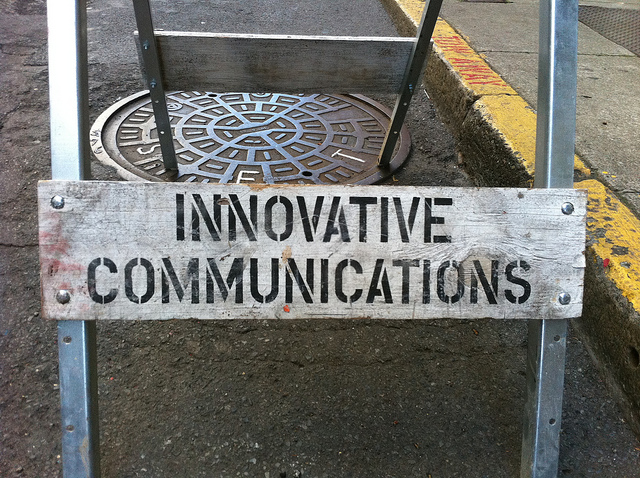This month at Postconsumers, we’ve been talking about innovation. Some of that is because we’re fascinated with the speed and breadth of innovation happening in the world right now – and some of that is simply because we consider postconsumerism itself to be an innovation in thinking. After all, if all of society tells you to buy into the idea of addictive consumerism, it’s innovative to think differently. We feel that learning to adopt an innovative thinking approach to daily living can only help you to find the satisfaction of enough by “getting outside of the box.” That’s why today we’re talking about tips on how to be more innovative at home.
First, Identify Your Ruts
Habit and routine can be calming elements that also help you to be efficient and organized, which is important given how much time famine most of us experience. But they can also be weights that keep you from exploring new ways of thinking or of doing things. Schedule an hour (or two) of time just to yourself. We know that this can be hard to come by, but it should be an important part of your life regardless. We all need some reflective time. But in this instance, your reflective time is guided. Really take an hour (or two) over a hot cup of tea or your favorite beverage to think about places in your life where you may be in too much of a rut or routine. Do you buy the same groceries just because it’s easy and quick to stop in familiar grocery aisle locations? Do you watch two hours of television per night just because that’s what you’ve always done to unwind? Think about your routines and be honest about whether they’re routine … or rut. Once you have your list of places where you may be just going through the motions, you can start to explore other options.
Then Think About Ways to Shake Up the System
The best part about this process is that you get multiple points where it’s time to take “you time” and reflect on things. After your first bout of you-time when you’ve identified areas where you may be in a rut, take a second afternoon or evening to yourself. When you do that, pick one or two items off of your list (don’t do more, you may get overwhelmed) and make a secondary list of ways that you could change up the system. For example, if you’ve identified that you always pack lunches for yourself or others using prepackaged, processed food just because it’s easiest, there are lots of alternatives that don’t mean having to cook every day. Take one day to bake and freeze treats that you can use for months to come and experiment with different ingredients and flavors. It’s all about just looking for ways to take things that have become routine and finding ways to do something different. In the fourth section of this article, you’ll see how that pays off.
Now Be Patient With Yourself
Breaking habits, getting out of routines and changing how you think aren’t changes that happen overnight. In fact, the reality is that you may “fail” at them a lot at the beginning. Using the example above, for every one time you do something other than grab the pre-packaged, processed food you’ll still grab the pre-packaged, processed food five times. That’s just the evolution of change. It doesn’t mean that you’re not succeeding or that the changes you’re trying out won’t get easier for you. After all, the reason that something is a habit or a routine is that you don’t have to think about it at all when you do it. That’s much easier and natural than having to stop, think, alter patterns and even create the extra time that you need because your routines and ruts had become very time efficient over the years. The most important thing that you can do at this phase in the process of learning to be more innovative and creative by nature is to be patient with yourself. But also have goals and expectations. Don’t just give up on changing your normal every day patterns because you’re only batting a twenty percent average. Work slowly and methodically to become better and better at breaking the norm.
Now, Watch the Change in You Begin
Ironically, becoming more innovative and creative is as much about habit as anything else! Once you begin to train yourself to automatically look for alternative solutions or different ways of solving everyday problems, it will become second nature. Your first response won’t be to think “What’s the way I always do this.” It will be to think “What is a better way to do this?” It will take time (likely lots of time), but eventually your normal way of addressing both daily and unique tasks and challenges in your life will shift from routine to innovative.
The trick is to train yourself, and that’s how this suggested method of change is designed. Start by identifying areas where you already know that you’re in a rut and work to change those. Be patient, give yourself time and the room to not always get it right. Then wait for the magic to happen, and it will! It’s true that some people are natural innovative thinkers. Some people are also natural musicians, but that doesn’t mean that it’s not possible for almost anybody to learn to play the piano. The same is true with innovation – anybody can learn to become a more naturally innovative thinker.
Did we miss a way to train yourself to become more innovative that you love and would like to share? Tell us about it on the social media channels below.
Facebook | Twitter | Instagram | Tumblr | Pinterest | Google+





